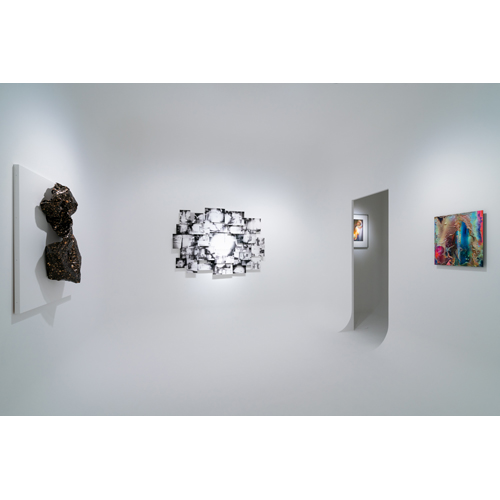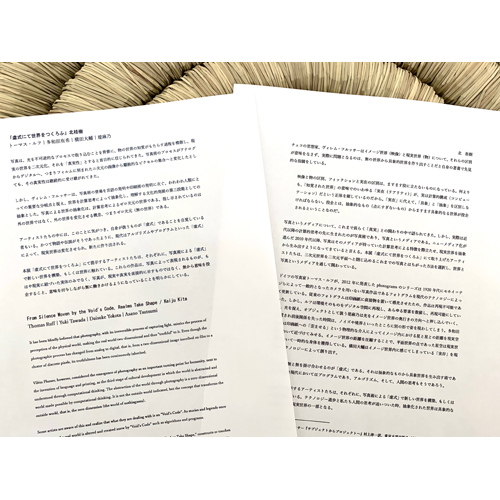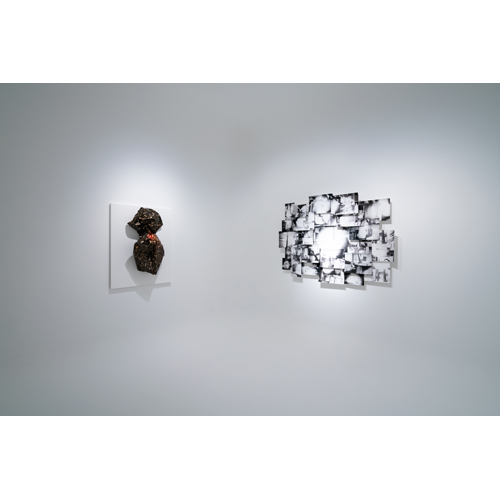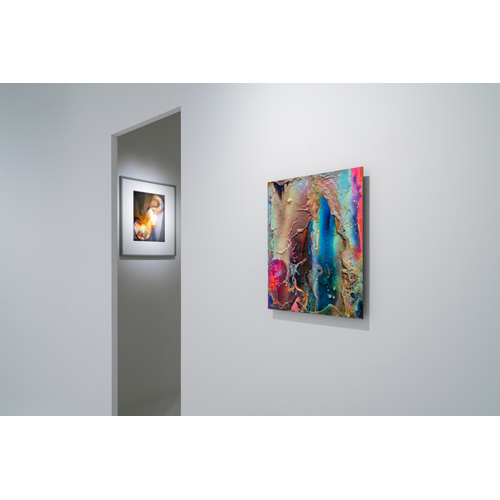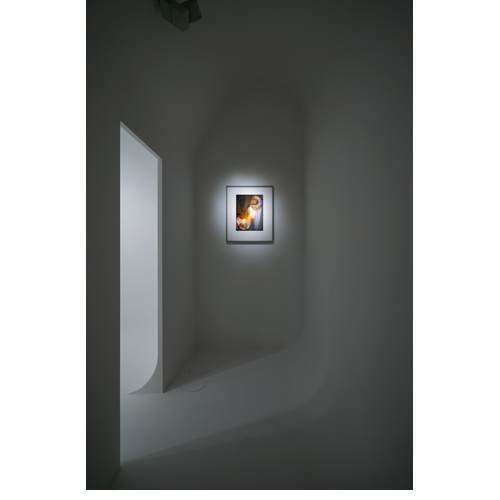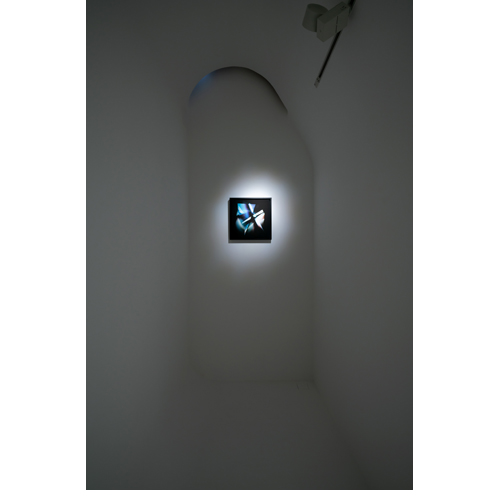2023, November 8th – December 8th
Keiju Kita
ーFrom Silence Woven by the Void’s Code, Realms Take Shapeー
Thomas Ruff・Yuki Tawada・Daisuke Yokota・Asano Tsutsumi /photographs
It has been blindly believed that photography, with its irreversible process of capturing light, mimics the process of perception of the physical world, making the real world two-dimensional and thus “truthful” to it. Even though the photographic process has changed from analog to digital, that is, from a two-dimensional image inscribed on film to a cluster of discrete pixels, its truthfulness has been continuously inherited.
Vilém Flusser, however, considered the emergence of photography as an important turning point for humanity, next to the invention of language and printing, as the third stage of cultural development in which the world is abstracted and understood through computational thinking. The abstraction of the world through photography is a zero-dimensional world made possible by computational thinking. It is not the outside world indicated, but the concept that transforms the outside world, that is, the zero dimension (the world of nothingness).
Some artists are aware of this and realize that what they are dealing with is an “Void’s Code”. As stories and legends once were, today, the real world is altered and created anew by “Void’s Code” such as algorithms and programs.
Each artist shown in this exhibition, “From Silence Woven by the Void’s Code, Realms Take Shape,” constructs or touches a new world through the “the Void’s Code” of the photographic technique. These works reveal that what is represented by photography is no longer only an entity tied to reality, and that photography no longer directly represents reality or truth, but rather projects meaning from nothingness, and works on nothingness as it imparts meaning.
Czech thinker Vilém Flusser pointed out that the distinction between the world of images (visual images) and the world of reality (objects) is meaningless, and that what matters is the creation of a concrete world out of nothingness.
The distinction between images and objects, between fiction and reality, is becoming increasingly useless. Above all, the so-called “reality” in the sense of the “perceived world” is revealing itself to be a computational formation. Instead of “reality,” we must distinguish between “concrete” and “abstract.” The projection refers to the projection of an increasingly concrete world from the abstract (that which is merely a point).
The medium of photography has long been discussed in relation to “truth”. In reality, however, the photography, and the medium of photography, were born out of the computational thinking that has been developed since the modern era. Since the 2010s, when new media has been developed, photography has come to accentuate the characteristics of the medium’s computational thinking and to generate the real world from abstraction. The artists featured in this exhibition, “From Silence Woven by the Void’s Code, Realms Take Shape,” have chosen a method different from conventional photography, which confines the three-dimensional world to a two-dimensional plane, to engage with the world through the medium of photography.
German photographer Thomas Ruff’s 2012 series of photograms is an update of the non-camera photograms popularized by Moholy-Nagy and others in the 1920s, using contemporary technology. Conventional photograms were created by placing an object directly on the photographic paper, making it impossible to reproduce the work. Ruff, however, reproduces the environment itself in digital space, making every element quantifiable and reproducible. Asano Tsutsumi captures light and treats it as an object, pushing it into the depths of the image world. Time, which has been juxtaposed and lost its front-back relationship, appears in a different form in the form of noise and boundaries. Yuki Tawada physically “distorts” the photographic paper to bring the distance between the stars within the image in real space. By compressing the distance of the image world, the starry sky, which used to be a point in the flat world, acquires a temporary body in the real world. Daisuke Yokota creates the “existence” perceived in the world of images with the help of contemporary technology.
The “Void’s Code” is a multiplication of dots and dots and nothingness and nothingness. It is the art of creating the concrete world from the abstract. It is a program, an algorithm, or even a human thought in our time.
Each of the artists in this exhibition has constructed or touched upon a new world with “Void’s Code,” through photography. When technological progress and our human thought catch up, the abstracted world becomes a part of the real world as something concrete.
i) Vilém Flusser, Vom Subjekt zum Projekt, tr. Junichi Murakami, University of Tokyo Press, 1996, p.16
Keiju Kita
Keiju Kita
Contemporary Photography Researcher/Artist
Graduated from the Photography Course of the Faculty of Correspondence Education at Kyoto University of Art and Design in 2017. Completed the Graduate School of Arts at Kyoto University of Art in 2023, obtaining a Ph.D. in Contemporary Photography. Began creative activities during enrollment at Kyoto University of Art and Design, ranging from analog processes to the development of new photographic techniques through programming. Views photography as a medium for the “visualization of energy.” Has exhibited work both domestically and internationally. Pursued research on the possibilities of expression in the field of contemporary art related to the medium of photography, with a focus on “POST/PHOTOGRAPHY” at the Graduate School of Kyoto University of Art. Conceptualizes the extension of photography as something viral, discussing it under the concept of “photographic variants” while concurrently producing related works.

